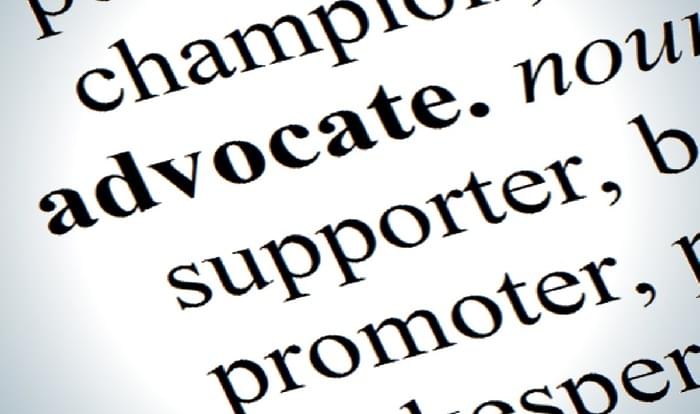According to David C. Edelman and the Harvard Business Review, “Today’s [customers] are promiscuous in their brand relationships.” How, then, can the modern marketer build an effective advocate marketing strategy?
For starters, you need to understand the value of advocacy.
Influitive — a software vendor that helps companies encourage, track, and reward advocacy — defines advocates as:
“…customers, partners, employees, influencers, and other stakeholders that are willing to publicly support, endorse, or recommend your company, products, or services.”
That means you need to (1) identify and (2) inspire advocates who will speak and act on your behalf. Since modern marketing is all about metrics, the biggest challenge will be accurately measuring how your advocate marketing efforts impact profitability.
ALSO READ: Why Your Business Can’t Ignore Advocate Marketing
Of course, for every brand advocate identified, there are hundreds of customers ready to start using the services of your closest competitor at a moment’s notice. One example is the war between traditional and online retailers: retail customers are so promiscuous today that we’ve coined new terms like showrooming (
viewing a product in-store before buying it online at a lower price).
Despite promiscuity in almost every market with more than a few vendors, some
brands manage to inspire a level of loyalty that rises to brand advocacy, or even the fabled “evangelism.” Just look at the cult following enjoyed by companies like Apple, Harley-Davidson, IKEA, or Wegman’s. New products and stores are met with long lines, media mayhem, and astronomical sales. None of these things are accidental. They require a thorough understanding of human motivation and an authentic, seamless brand experience.
Why Advocate Marketing?
Maybe you’ve already decided to pursue an advocate marketing strategy, but you’re wondering how advocacy and promiscuity can simultaneously exist in the same market, demographic, or community. In reality, they’re two sides of the same coin: you have advocates on one side, and on the other, everyone else . . . ready to abandon your brand the moment it becomes convenient. The modern customer decision journey, as outlined by Edelman in the HBR graphic below, reflects this duality:
 The largest loop (consideration and evaluation) is where buyers spend most of their time. They make their purchase and quickly exit the Enjoy→Advocate→Bond overlap before most brands take the opportunity to build a lasting relationship. Those brands who do build a bond with customers can pull them into the smaller “Loyalty Loop,” where they’ll spend far more time advocating and bonding than buying, but where they will — however unconsciously — have the biggest impact on revenue.
The classic marketing concepts of reach and frequency, coupled with the gold-standard trusted referral, best explain this outsized impact. Your brand advocates will redistribute your marketing messages to their own networks, which has a multiplying effect.
The largest loop (consideration and evaluation) is where buyers spend most of their time. They make their purchase and quickly exit the Enjoy→Advocate→Bond overlap before most brands take the opportunity to build a lasting relationship. Those brands who do build a bond with customers can pull them into the smaller “Loyalty Loop,” where they’ll spend far more time advocating and bonding than buying, but where they will — however unconsciously — have the biggest impact on revenue.
The classic marketing concepts of reach and frequency, coupled with the gold-standard trusted referral, best explain this outsized impact. Your brand advocates will redistribute your marketing messages to their own networks, which has a multiplying effect.
Building Your Own Strategy
Before you can organize and mobilize customers on your behalf, you’ll need an advocate marketing strategy — a roadmap to help you build effective practices and track ROI.
Identifying Brand Advocates
First and foremost, you’ll need to establish a list of potential advocates. Ask the following questions:
-
- Who are your best customers?
- Who spends the most money with you?
- Who are your longest-tenured customers?
- Who has reviewed your product on sites relevant to your industry?
Determining which ones are most
likely to advocate on your behalf will take a little more work. You’ll need to track engagement over time; determine not only who likes, shares, and/or comments on your posts, but who does all of those things the most.
The Ultimate Question
Once you’ve built a list of possible advocates, it’s time to ask what authors Fred Reichheld and Rob Markey call The Ultimate Question:
How likely is it (on a scale of 1–10) that you would recommend this company/product/service to a colleague or friend?
Markey and Reichheld created The Ultimate Question
as part of their work in developing the Net Promoter Score, or NPS. An effective advocate marketing program can solve many of the oft-discussed issues with using NPS to measure marketing success. The ultimate question
is valuable inasmuch as it helps you identify advocates. Rating of 9 or above? Probably an advocate (or the opportunity is there for them to become one).
Advocate Personas
Now that you’ve identified the best
potential advocates, you need to create a set of advocate personas. Those familiar with marketing automation buyer personas can skip ahead to the next section. Those of you unfamiliar with personas or other marketing automation terms, please continue.
An advocate persona is, essentially, an archetype. Analyze your list of likely advocates. Where are the patterns?
If you’re a B2B marketer, you’ll find this part a little easier, since you can start with job titles, industry, etc. B2C marketers may initially find it difficult since they’re marketing to a wider demographic, but a pattern will still emerge. Information such as age, gender, and household income will shed light on motivations for advocacy.
Motivation
Not everyone is motivated the same way. Some customers prefer monetary rewards or early access to new products. Others simply enjoy being helpful — to their friends and family, or to a brand they appreciate. Focus most of your efforts on advocates who are motivated by non-financial incentives. A strategy built on financial incentives is more aligned with affiliate marketing (a viable strategy, but one that can cause dissonance among potential buyers).
It isn’t enough to simply identify and activate brand advocates.
The real trick is keeping advocates positively engaged with your brand. They say it costs more to acquire than retain a customer, but the opposite holds true for advocates, especially if you’re offering financial incentives. The longer you use them, the more expensive they become, which means their net utility decreases. This is why it’s important to initially focus on motivating advocates with non-financial incentives. You may not grow your list of advocates as quickly, but the growth you do achieve will be sustainable.
Measurement
Identifying and activating advocates are arguably the most important parts of any advocate marketing strategy, but without accurate methods to measure ROI, you may have a hard time convincing executives of your strategy’s success. Unless your campaign is focused on building brand awareness, you’ll do well to ignore vanity metrics like shares, clicks, and downloads. Ultimately, it’s profit that matters most.
Profit-centric metrics include revenue per customer, cost per acquisition, and visitor-buyer conversion rates. Integrating your CRM and marketing automation systems will make tracking these easier, but you might also consider using surveys, tracking links, and other tools to properly attribute leads and deals to the correct marketing channel.
Closing Thoughts
The August 2015 CMO Survey revealed that more brands are outsourcing their social media and interactive marketing channels to agencies, further distancing themselves from potential advocates.
This is a move in the wrong direction.
Authenticity-starved customers want to interact with you. A
separation between your marketing, sales, and service operations will only make it more difficult to create a seamless brand experience.
In short, mobilizing your brand advocates will help you build both awareness and goodwill. There’s no marketing message more powerful than a trusted referral, and organized, engaged advocates can provide a steady stream of these for your sales team.
 The largest loop (consideration and evaluation) is where buyers spend most of their time. They make their purchase and quickly exit the Enjoy→Advocate→Bond overlap before most brands take the opportunity to build a lasting relationship. Those brands who do build a bond with customers can pull them into the smaller “Loyalty Loop,” where they’ll spend far more time advocating and bonding than buying, but where they will — however unconsciously — have the biggest impact on revenue.
The classic marketing concepts of reach and frequency, coupled with the gold-standard trusted referral, best explain this outsized impact. Your brand advocates will redistribute your marketing messages to their own networks, which has a multiplying effect.
The largest loop (consideration and evaluation) is where buyers spend most of their time. They make their purchase and quickly exit the Enjoy→Advocate→Bond overlap before most brands take the opportunity to build a lasting relationship. Those brands who do build a bond with customers can pull them into the smaller “Loyalty Loop,” where they’ll spend far more time advocating and bonding than buying, but where they will — however unconsciously — have the biggest impact on revenue.
The classic marketing concepts of reach and frequency, coupled with the gold-standard trusted referral, best explain this outsized impact. Your brand advocates will redistribute your marketing messages to their own networks, which has a multiplying effect.





